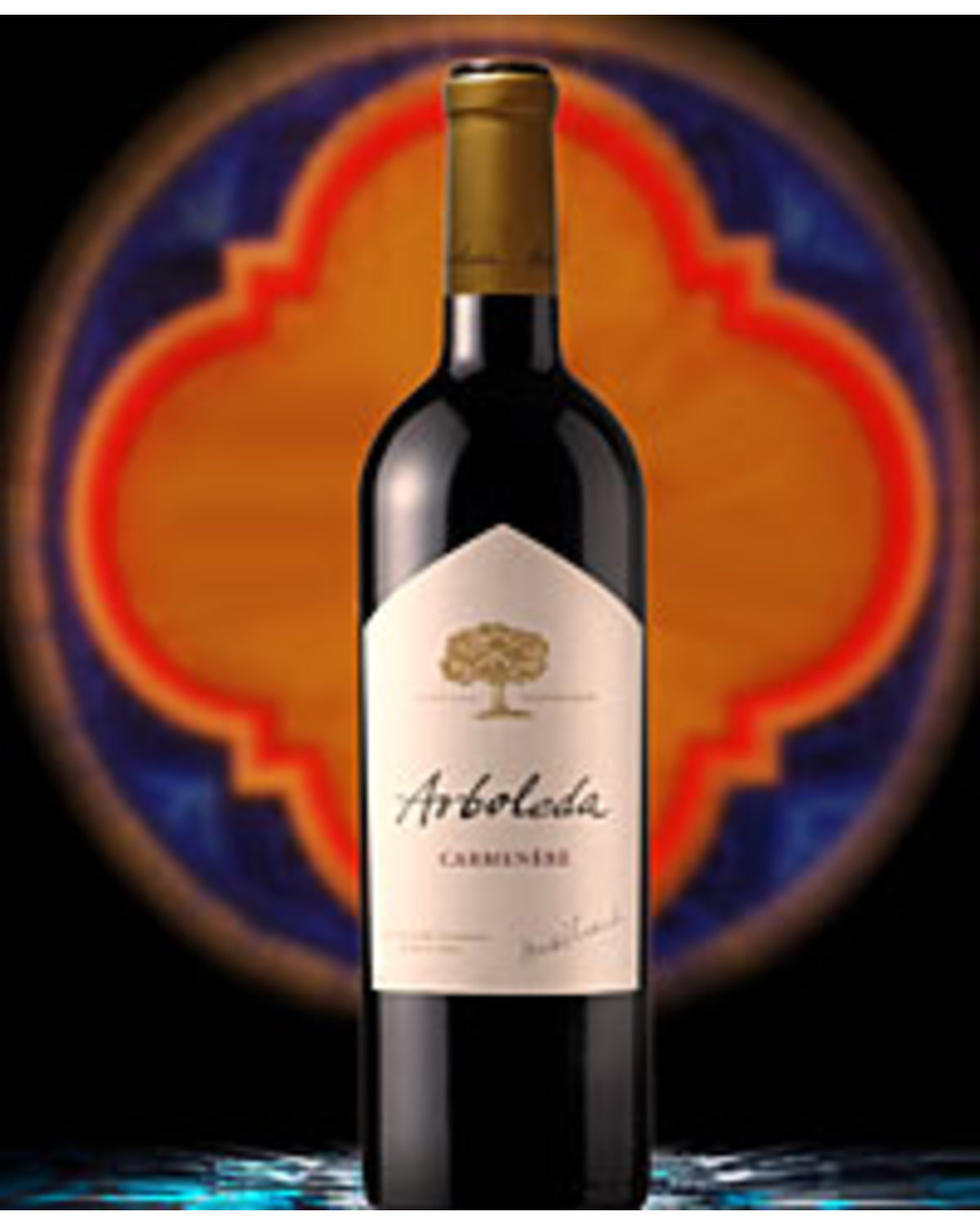
- 96
2008 Arboleda Carmenere
& the Next Big Thing.
To most of us one grape vine looks remarkably like another, but to the vigneron the differences between them are enormous and still being calculated. Different varieties respond to different regions, different climates and different soils. Trial and error, accident and plenty of perseverance form the bedrock for any wine of excellence. Have we already identified all of the world's great grape varieties and terroirs? Certainly not. Spain's Albarino and Argentina's Malbec, while not yet big in Australian markets, are now internationally recognised as 'grand varietals'. They were barely on anyone's radar a decade ago. Here is another example - Carmenère from Chile.
We first tasted these wines (pronounce car-men-YEHR) back in late 2005. A trial shipment arrived in 2007 but due to the relatively small quantities, many winelovers missed out. This shipment concentrates on more mid-priced Carmenères from two top vintages, though there are several other surprise buys. More on these wines below. First it's worth recounting the remarkable sequence of events that have positioned Carmenère as one of the world's newest 'noble' varieties.
Once common in Bordeaux, particularly in the Medoc, commercially significant plantings no longer exist. Most were already pulled before the 1857 'phylloxera' epidemic finally wiped Carmenère out. It was never replanted. Financially distressed Bordeaux growers couldn't afford to gamble on what had essentially been a dunce performer and a burden for the region's vignerons. It was the last of the red grapes to ripen, and in Bordeaux often failed to fully ripen resulting in excessive green flavours. This combined with its erratic tendency to develop a condition called 'coulure', (poor fruit set after flowering) and intolerably low yields contributed to its demise throughout Europe. Carmenère only narrowly avoided oblivion by jumping ship for Chile shortly before the phylloxera crisis hit France. Unfortunately, vineyard arrangements and planting records were not exactly methodical at that time, nor were varieties always well characterised. It's clear from the catalogue of James Busby's collection, for example, put out by the Sydney Botanic Gardens in 1842 that some of the varieties first bought to Australia were confused to say the least. Vine types gradually became better identified by a discipline known as ampelography - the recognising of species by the shape and contours of vine leaves, the sex of the flowers, the shape of the grape clusters, seediness and flavour.
For over 150 years, Chilean vignerons mistook Carmenère for something else. Many suspected it to be an unusual clone of Merlot and it came to be known as 'Merlot selection' or 'Merlot Peumal.' It was only in 1993 when the renowned viticulturist Professor Jean-Michel Boursiquit of Ensa de Montpellier carried out a detailed scientific survey that viticulturists realised the two similar vines had been growing together for more than a century. Boursiquot's identification was confirmed by DNA profiling in 1997.
Carmenère is the sixth member of the Cabernet family (the others being Cabernet Franc, Merlot, Malbec and Petit Verdot). Since it's identification, Chilean vitculturalists have been refining the way they manage Carmenère. In particular, ripening must be thorough to avoid the varietal's latent herbaceous/green pepper notes. It's no longer picked with the early-ripening Merlot but, with or after the late-ripening Cabernet Sauvignon. A uniform ripening period is also preferable to maintain the fruit's natural acidity so that the wine doesn't need to be aggressively acidified during vinification. When it's done right, the results are as exciting and explosive as the best Australian Shiraz. Outstanding colour and flavour richness combine with the texture and structure of very good Cabernet (think premium Australian Cabernet Shiraz blends and you begin to get the picture).
Three Carmenere's are presently on offer (plus a selection of other top value Chilean imports). If you pass over these wines because for you 'Chile' means 'cheap and cheerful' remember, firstly, these are direct imports - the prices are skewed in your favour. Secondly, land and labour costs in Chile are still far below those of 'premier' regions like Bordeaux or the Barossa. While Carmenère remains obscure in all but name even to seasoned winelovers, the mass marketers are beginning to get the word out. Producers and importers will inevitably inflate their prices. Right now $20 wines that taste like $40 remain within your grasp.
Tasting note: 'Arboleda' represents the premium tier from the Eduardo Chadwick family of wines. Aged for 12 months in 70% French and 30% American oak barrels, 43% of which were new, this wine displays a typically impressive, saturated opaque black dark red colour with dark red hue. The aromas are a touch closed at present, but as we’ve experienced with previous vintages these wines begin to blossom after 3-6 months off the boat. Scents of black cherry, liquorice, spice and cedar are evident with a hint of tobacco. Displaying great elegance the palate is still quite tightly knit but shows tremendous concentration – it just needs time to show its full wares. Flavours of inky ripe blackberry and black cherry are followed by spice, cedar and a touch of blackpepper. Very fine grained tannins, on the dry side but perfectly balanced. Very long aftertaste of inky blackberry, dark cherry and spice. Cellar 4-5 years (2014-2015). Alc 13.5%.
to most of Australia
